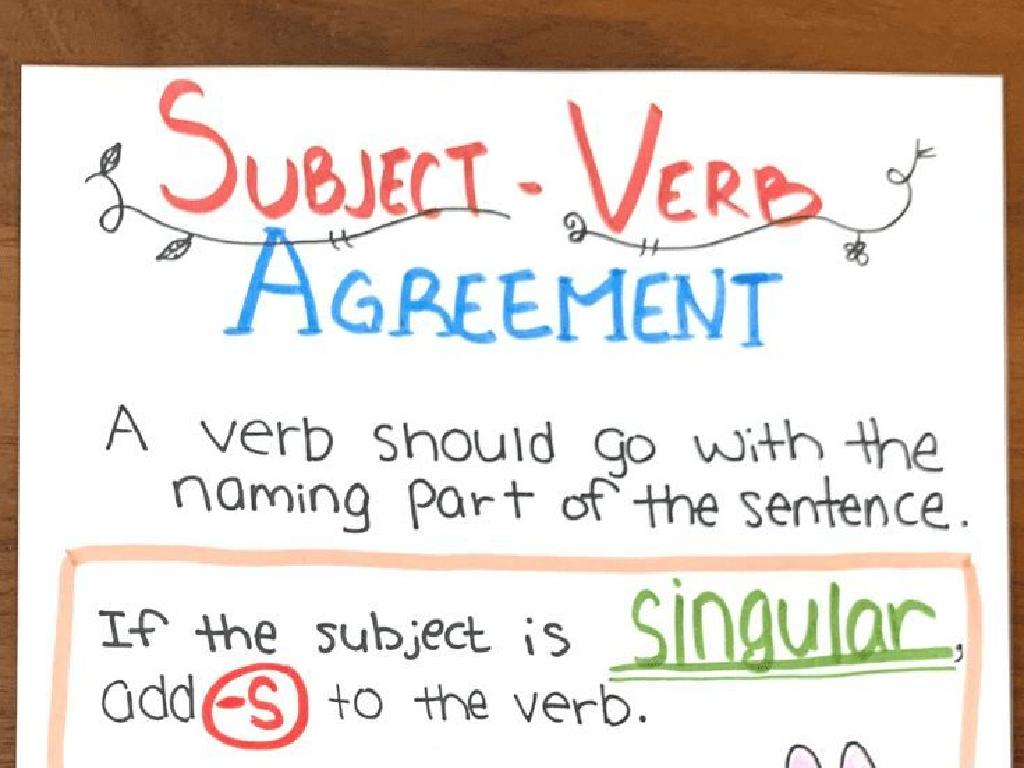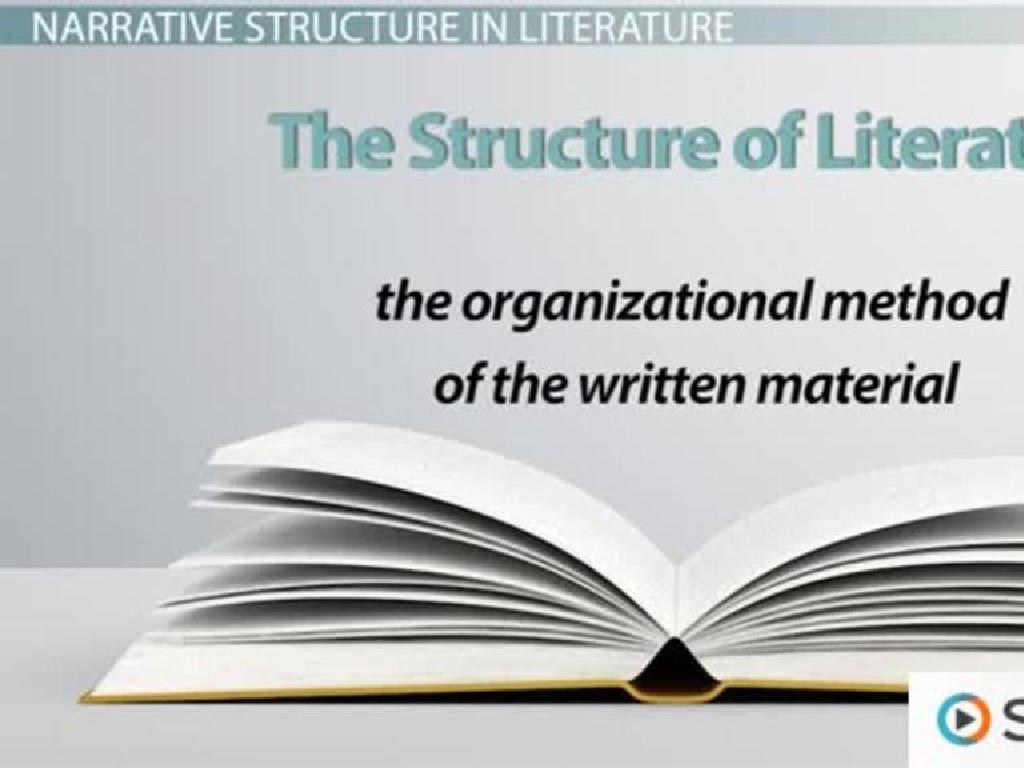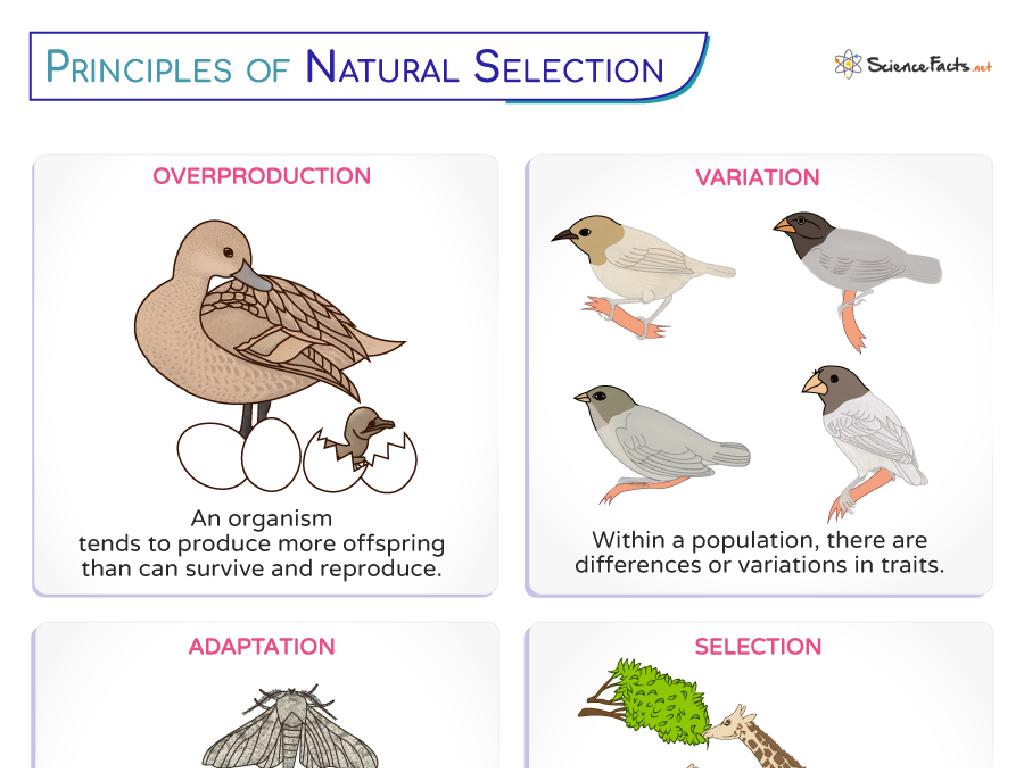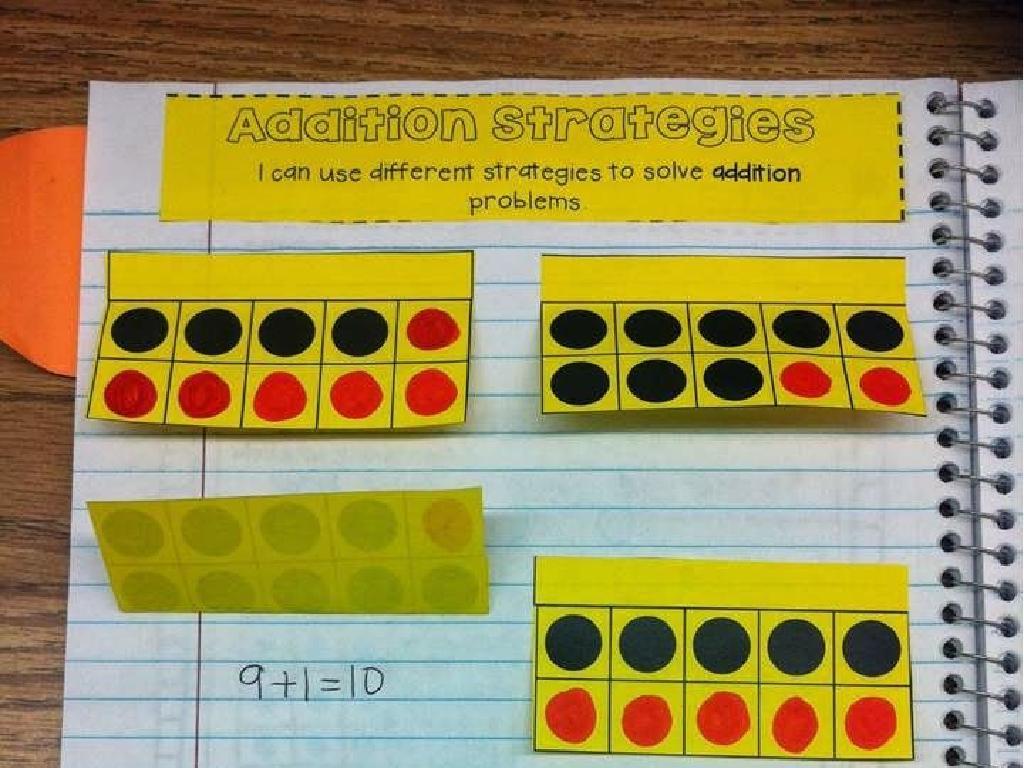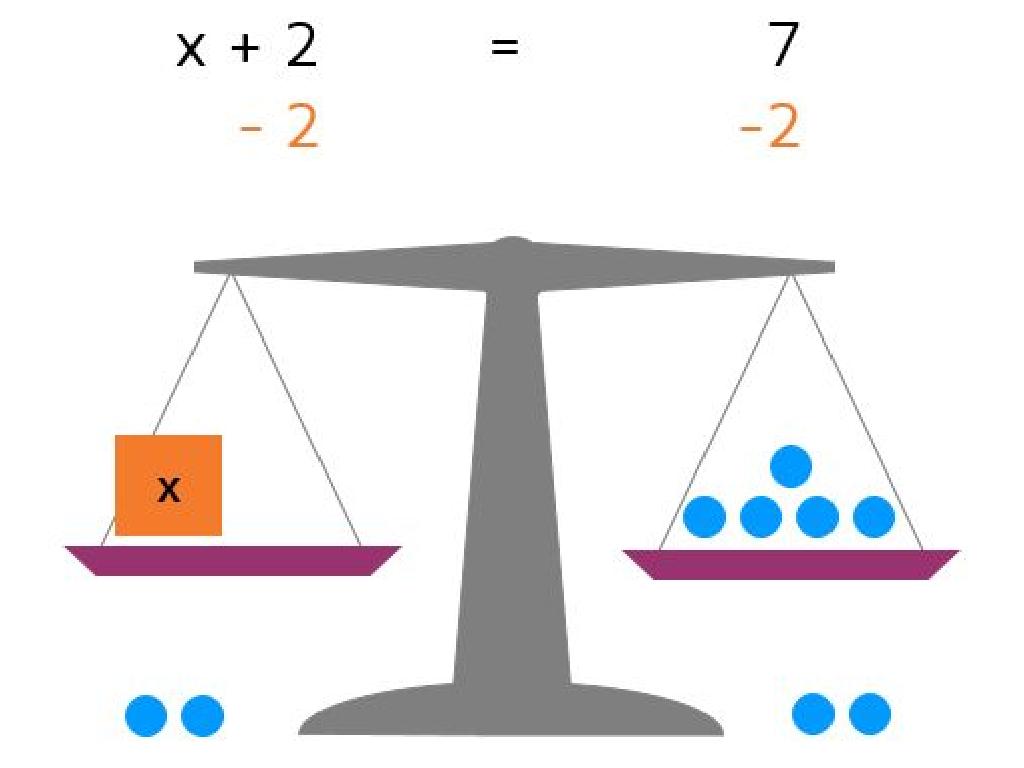Identify Solids, Liquids, And Gases
Subject: Science
Grade: Third grade
Topic: States Of Matter
Please LOG IN to download the presentation. Access is available to registered users only.
View More Content
Exploring States of Matter
– What are solids, liquids, and gases?
– Solids have a fixed shape; liquids flow; gases fill their container
– Characteristics of each state
– Solids: ice; Liquids: water; Gases: steam
– Materials in different states
– Water can be ice (solid), liquid water, or steam (gas)
– Changing states of matter
– Heat can turn ice into water, and water into steam
|
Begin the lesson by introducing the three states of matter: solids, liquids, and gases. Explain that solids have a definite shape and volume, liquids take the shape of their container but have a definite volume, and gases fill the entire space of their container. Use relatable examples like ice, water, and steam to illustrate materials in different states. Discuss how matter can change states through heating or cooling, such as water turning into ice when frozen or into steam when boiled. Encourage students to think of other examples and to observe the states of matter in their daily lives.
Exploring States of Matter
– Matter makes up everything
– Matter: mass and space
– If you can touch and hold it, it’s matter.
– Solids, liquids, and gases
– Ice is solid, water is liquid, steam is gas.
– Observing matter around us
– Look around to find examples of each state.
|
This slide introduces the concept of matter and its different states to third-grade students. Begin by explaining that everything they can see and touch is made up of matter. Matter is defined by its ability to occupy space and have mass, which is a new concept for many students at this level. Use relatable examples like toys (solids), drinks (liquids), and the air we breathe (gases) to illustrate the three states of matter. Encourage students to observe and identify objects in the classroom or at home that fit into each category. This will help them understand the tangible aspects of matter and how it is an integral part of their daily lives.
Characteristics of Solids
– Solids have a definite shape
– Solids have a definite volume
– Particles are closely packed
– Like tiny blocks in a box, they don’t move freely
– Common examples of solids
– Rocks, ice, and desks are all solids you see every day
|
This slide introduces the characteristics of solids to third-grade students. Emphasize that solids are unique because they have a specific shape and volume that do not change. Explain that the particles in a solid are like tiny blocks packed closely together, which is why solids are hard and keep their shape. Use relatable examples such as rocks, ice, and a school desk to help students connect the concept with real-world objects they are familiar with. Encourage students to think of other solids they encounter daily and discuss why those items are considered solids based on their properties.
Characteristics of Liquids
– Liquids: definite volume, no set shape
– Liquids fill up the space they’re in but don’t change how much there is.
– Conform to shape of containers
– If you pour water into a cup or a bowl, it looks different but is still the same amount of water.
– Examples: water, milk, juice
– Think of things we drink or liquids we use every day.
|
This slide aims to help students understand the properties of liquids within the context of states of matter. Emphasize that while liquids can change shape depending on the container they are in, the amount of liquid remains the same, which is their volume. Use relatable examples like water, milk, and juice to illustrate this concept, as these are liquids students interact with regularly. Encourage students to think of other examples of liquids and how they behave in different containers. You can also demonstrate this by pouring water into various shaped containers to show that the volume remains constant but the shape changes.
Characteristics of Gases
– Gases have no fixed shape
– Unlike solids and liquids, gases change shape to fill containers
– They fill all available space
– Gases expand to occupy the whole container or area they are in
– Examples: Air, helium, steam
– Air we breathe, helium in balloons, steam from boiling water
– Gases are all around us
|
This slide aims to help students understand the properties of gases as part of the states of matter. Gases are different from solids and liquids because they don’t have a definite shape or volume. They will spread out to fill the entire space they’re given. Use everyday examples like the air around us, helium in balloons, and steam from a kettle to illustrate these points. Encourage students to think of more examples of gases they encounter in daily life. Discuss how gases are not always visible but are an important part of our environment.
Changing States of Matter
– Matter changes with heat or cold
– Melting turns solid to liquid
– Example: Ice melting into water
– Freezing turns liquid to solid
– Example: Water freezing into ice
– Evaporation turns liquid to gas
– Example: Water evaporating into steam
– Condensation turns gas to liquid
– Example: Steam condensing into water
|
This slide explains how matter can change between different states: solid, liquid, and gas, through the processes of melting, freezing, evaporation, and condensation. When matter is heated, it can melt or evaporate, turning from solid to liquid or from liquid to gas, respectively. Conversely, when matter is cooled, it can freeze or condense, changing from liquid to solid or from gas to liquid. Use everyday examples like ice melting into water or steam from a kettle condensing on a cold surface to illustrate these concepts. Encourage students to think of other examples they’ve observed in daily life and to understand that the type of matter doesn’t change, just its state.
Let’s Experiment with States of Matter!
– Observe ice melting into water
– Ice, a solid, becomes liquid as it warms up
– Watch water freeze back to ice
– Liquid water becomes solid ice in the freezer
– See water turn into steam
– Heating water until it becomes gas, or steam
|
This class activity is designed to help students observe the transition between different states of matter firsthand. Prepare three stations: one with ice cubes at room temperature, another with a small container of water to be placed in a freezer, and a kettle or a pot to heat water until it produces steam. Students will rotate through the stations and observe the changes. Make sure to discuss safety precautions, especially when dealing with hot water and steam. Possible activities include: drawing the process, writing observations, or predicting what happens next in the process. This will help solidify their understanding of solids, liquids, and gases.
Class Activity: Matter Scavenger Hunt
– Find classroom solids, liquids, gases
– Work in groups for a matter list
– Discuss the state of each item
– Why does each item fit its state?
|
This interactive activity is designed to help students apply their knowledge of the states of matter by identifying examples in their immediate environment. Divide the class into small groups and instruct them to search the classroom for solids (like desks and books), liquids (like water in a vase or paint), and gases (like the air we breathe). Each group should make a list of the items they find. After the scavenger hunt, regroup and discuss why each item is a solid, liquid, or gas, reinforcing the characteristics of each state of matter. Possible activities for different students could include drawing the items they find, categorizing them on a chart, or presenting their findings to the class. This will help solidify their understanding of the three states of matter and how to distinguish between them.
Exploring States of Matter: Conclusion
– Congratulations on learning states of matter!
– Matter exists in various forms everywhere
– Solids, liquids, gases are forms of matter
– Observe daily changes in matter
– Notice water, ice, and steam in daily life
– Continue exploring and learning
|
This slide wraps up our lesson on the states of matter. Reinforce the concept that matter is all around us and can exist in different states: solid, liquid, and gas. Encourage the students to keep an eye out for how matter changes from one state to another in their everyday lives, such as water freezing into ice or boiling into steam. This observation will help them understand the practical applications of what they’ve learned. As they continue their journey in science, remind them to stay curious and to keep exploring the wonders of the physical world.

